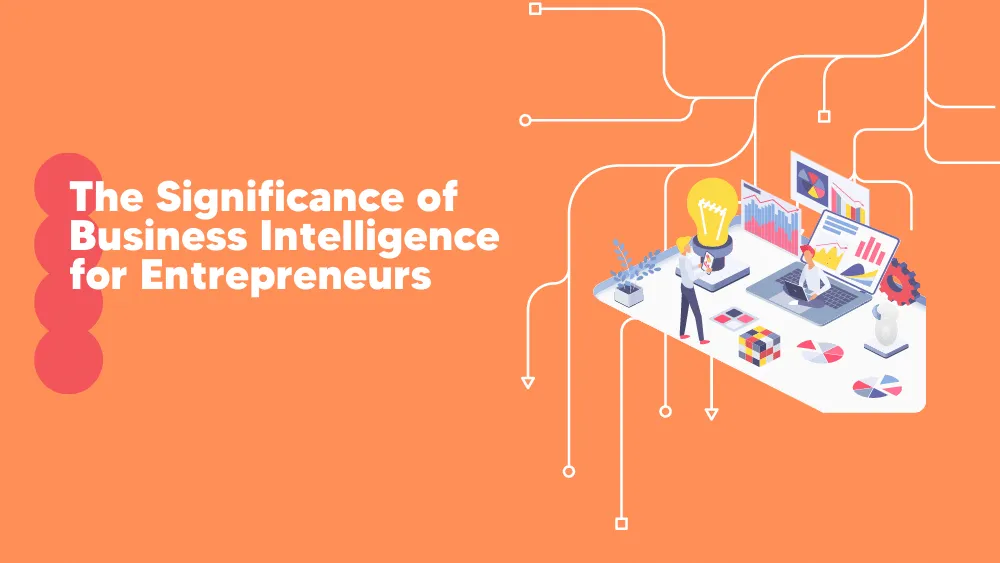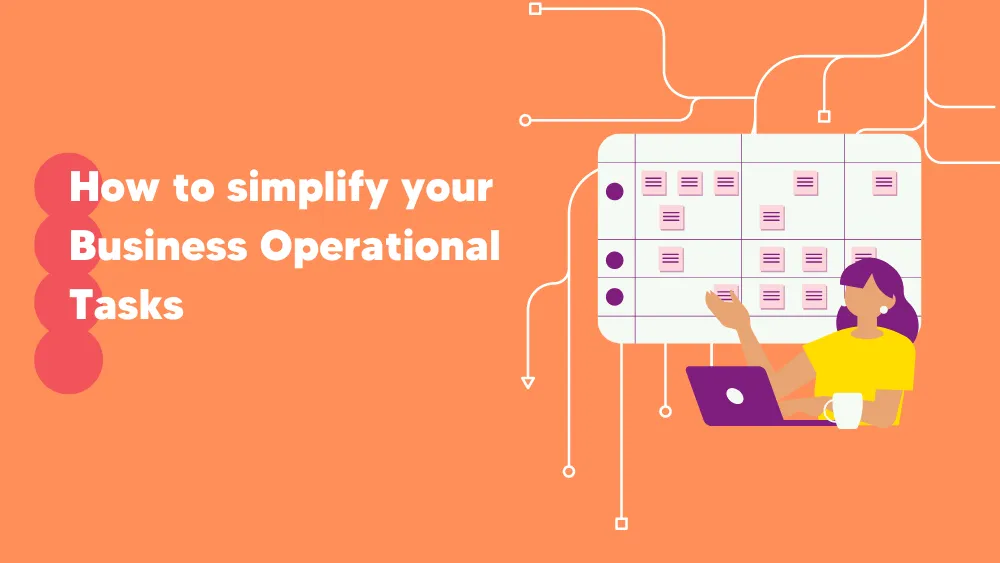Table of Contents
Beneath the relentless hustle and bustle of the entrepreneurial world, there’s a core truth every business leader has to acknowledge: we’re up against an unpredictable playing field packed to the brim with competition, market swings, and a torrent of decisions that could make a chess grandmaster sweat. Each choice we make doesn’t only affect the here and now but echoes into the future of our businesses.
As if this wasn’t challenging enough, there’s another element thrown into the mix: data. It’s everywhere, in the click of a mouse, the swipe of a card, the interactions with our brands, and the conversations about our products. But raw data, while abundant, is like an uncracked safe, holding a treasure trove of insights that remain undiscovered until properly interpreted and applied. That’s where our superhero, Business Intelligence, gets the spotlight.
BI, for those who prefer things short and sweet, is a blend of software and services that has one major superpower: it transforms data into insights that are not just meaningful but actionable. It’s like having a personal interpreter who can translate the complex language of data into clear, strategic directives.
With this tool at your disposal, you’re not just swimming in data; you’re using it to navigate the waters of business, spotting trends, tracking essential metrics, and predicting outcomes. This article will delve into the critical importance of business intelligence for entrepreneurs and everyone who wishes to learn more about this notion.
Understanding Business Intelligence
First, let’s dive into the fundamental question: what exactly is Business Intelligence? In essence, Business Intelligence, or BI for short, is a technology-driven process that revolves around gathering, analyzing, and interpreting substantial volumes of data. Its purpose? To transform the often chaotic and complex raw data into valuable insights that drive strategic decision-making.
BI versus Analytics: Navigating the Terms
Before we go further, it’s essential to understand the difference between Business Intelligence (BI) and Analytics, terms often used interchangeably but have some key distinctions. The disparity lies in their purpose, the nature of the insights they provide, and the timeframes they typically deal with.
At its core, Business Intelligence involves the tools and practices for collecting, integrating, and visualizing business data to offer current and historical views of business operations. BI is typically retrospective, meaning it looks at past and present data to answer the ‘what’ and ‘how’ questions about business operations. For instance, ‘What was our sales performance last quarter?’ or ‘How many products did we sell last month?’ By leveraging BI, businesses can track their performance, identify successes or failures, and make informed decisions based on that information.
On the other hand, Analytics usually refers to the statistical methods and technologies used to analyze past data to predict future outcomes or trends and guide strategic planning. It’s typically prospective and predictive, answering the ‘why’ and ‘what if’ questions about business operations.
For example, ‘Why did our sales drop last quarter?’ or ‘What if we change our pricing strategy?’ Analytics extends the data conversation, digging deeper into the reasons behind data trends and predicting future outcomes based on that understanding.
Components
To make it easier to digest, let’s look at the core elements that make up this multifaceted system. Fortunately, it’s far less complicated than unraveling the mysteries of the human mind. Rather, it involves a well-orchestrated interplay of several critical components. Let’s break them down:
- Data Collection: This is the foundation of Business Intelligence. Data is gathered from various sources, including social media platforms, websites, customer databases, and industry reports during this stage. The more comprehensive the data gathered, the more accurate and meaningful the ensuing insights can be.
- Data Management: Once the data is collected, the next step is effective data management. This entails securely storing and systematically organizing the data, ensuring easy access when needed. It also involves data cleaning, identifying and rectifying inaccuracies or inconsistencies to prevent skewed analysis. Additionally, data integration comes into play, consolidating data from different sources into a unified format for streamlined analysis.
- Data Analysis: With clean and well-structured data, it’s time to delve into data analysis. This pivotal phase utilizes advanced statistical methods to identify patterns, trends, and relationships within the data. It’s about thorough exploration, asking the right questions, and uncovering valuable answers that inform decision-making.
- Data Visualization: Data visualization is the final stage of the Business Intelligence process. This is where the insights gained from data analysis take shape in a clear, visual format. Whether through graphs, charts, or interactive dashboards, the aim is to present the findings easily, even for those who aren’t data experts.
Leveraging Business Intelligence for Strategic Decision-Making
Shining a Light on Opportunities
When it comes to gaining an edge in the market, entrepreneurs need to keep their finger on the pulse of their industry. That’s where business intelligence swoops in, with the superpower of deciphering complex data. By harnessing the power of business intelligence, it’s possible to understand the meaning of the market data, monitor competitors, and uncover new opportunities.
Entrepreneurs can dive deep into market research with business intelligence in their toolkits. They can examine trends, consumer preferences, and industry dynamics to make informed decisions. Entrepreneurs can fine-tune their approach and stay ahead by closely monitoring competitors’ strategies, pricing, and product offerings.
Cracking the Code of Consumer Behavior
Understanding the hearts and minds of customers is a golden key that unlocks success. That’s where business intelligence shines its spotlight. By harnessing the power of data-driven insights, entrepreneurs can decipher the mysteries of consumer behavior and gain a competitive advantage.
With business intelligence as their ally, entrepreneurs can delve into customer data, unraveling patterns and valuable insights. They can analyze purchasing habits, browsing behaviors, and feedback to tailor their offerings precisely. Whether launching new products, personalizing marketing campaigns, or improving customer service, business intelligence gives entrepreneurs a deeper understanding of their target audience.
Navigating the Waters of Uncertainty
Leading a business is thrilling but comes with its fair share of risks. That’s where BI comes to the rescue, helping entrepreneurs navigate the uncertain waters. By leveraging data analysis and predictive analytics, business intelligence enables entrepreneurs to identify potential risks, forecast outcomes, and make proactive decisions.
Because of it, they can analyze data, uncover patterns, gain insights into potential risks and vulnerabilities, anticipate future scenarios, and take preemptive measures to mitigate risks and seize opportunities. It’s like having a crystal ball that provides a glimpse into the future, empowering entrepreneurs to make informed decisions and steer their businesses toward success.
Fueling Efficiency and Profitability
Efficient resource allocation and optimal performance are the fuel that propels businesses toward greatness. Here, business intelligence empowers entrepreneurs to make data-driven decisions that streamline operations and maximize profitability. With business intelligence as their guide, entrepreneurs can dive deep into performance metrics, uncovering insights into sales, inventory, and production efficiency. Analyzing these metrics makes it possible to identify bottlenecks, streamline processes, and optimize resource allocation.
Tools and Technologies for Business Intelligence
Data Collection and Management Tools: Streamlining the Data Journey
In the vast maze of data, one needs the right tools to gather and manage information effectively. Thankfully, the business intelligence world offers many tools and technologies to simplify data collection and management.
Entrepreneurs can explore tools like data integration platforms, customer relationship management (CRM) systems, and web analytics tools. These solutions help streamline data collection from various sources, ensuring a seamless flow of information. Data management tools like data warehouses and cloud-based storage systems also provide secure and organized repositories for entrepreneurs to store and access their data efficiently.
Data Analysis and Visualization Tools: Unveiling the Insights
Once the data is collected and managed, the next step is to extract meaningful insights and compellingly present them. This is where data analysis and visualization tools come into play, empowering businesses to unlock the true potential of their data.
Popular tools include statistical software like R and Python and business intelligence suites like Tableau and Microsoft Power BI. They offer a range of capabilities, from basic statistical analysis to advanced machine learning algorithms. They can be utilized to uncover patterns, trends, and correlations within their data, helping them make informed decisions.
Regarding data visualization, tools like D3.js, Tableau, and Google Data Studio enable entrepreneurs to transform their data into captivating visual representations. They can create interactive dashboards, charts, and graphs communicating stakeholder insights. By presenting data visually appealing and easily digestible, entrepreneurs can enhance understanding and drive impactful decision-making.
Business Intelligence Platforms: All-in-One Solutions
Business intelligence platforms offer integrated functionalities for data management, analysis, and reporting for those seeking comprehensive solutions. These platforms combine the power of data collection, data analysis, and data visualization into a unified ecosystem.
Platforms like Microsoft Power BI, QlikView, and SAP BusinessObjects provide entrepreneurs with end-to-end business intelligence solutions. They offer data integration capabilities, advanced analytics features, and interactive visualization tools. These platforms allow them to streamline their entire business intelligence process, from data collection to insightful reporting.
Business intelligence platforms also often come equipped with collaboration features, allowing teams to collaborate, share insights, and make collective decisions. They empower entrepreneurs to harness the full potential of their data while fostering collaboration and synergy within their organizations.
Overcoming Challenges in Implementing Business Intelligence
The Significance of business intelligence for entrepreneurs is out of doubt; however, implementing it can present challenges, particularly regarding data quality, consistency, and integration. With data pouring in from various sources, maintaining the integrity of the data can be daunting.
Entrepreneurs often face data duplication, inconsistencies, and missing information, which can hinder the generation of accurate insights. To overcome these challenges, robust data governance practices should be established. This involves setting data quality standards, implementing data cleansing techniques, and establishing clear processes for data integration.
By implementing data quality checks, entrepreneurs can ensure that the data collected is accurate, complete, and reliable. They can leverage data cleansing tools and techniques to identify and rectify any discrepancies. Additionally, utilizing data integration platforms or application programming interfaces (APIs) can streamline combining data from different sources, ensuring consistency and coherence.
Bridging the Talent Divide: Skill Gaps and Resource Constraints
Another challenge entrepreneurs often encounter when implementing business intelligence is bridging the skill gaps and resource constraints. Extracting actionable insights from data requires analytical, technical, and domain-specific skills. However, not all businesses can access these skills or the necessary resources. One can consider outsourcing business intelligence tasks to external experts or agencies to overcome these challenges. Partnering with professionals experienced in data analysis allows entrepreneurs to tap into the expertise they need without the burden of hiring and training in-house teams.
Alternatively, it’s possible to invest in upskilling their existing teams. Entrepreneurs can enhance their employees’ analytical and data management skills by providing training programs, workshops, and online courses. This investment in employee development builds an internal workforce capable of effectively leveraging business intelligence.
Safeguarding the Crown Jewels: Data Privacy and Security
In the digital age, data privacy, and security are of paramount importance. Businesses must be mindful of the risks of handling sensitive data and take appropriate measures to protect it.
Implementing robust security measures, such as data encryption, access controls, and regular security audits, is essential, as well as staying informed about data privacy regulations, such as the General Data Protection Regulation (GDPR) or the California Consumer Privacy Act (CCPA), and ensuring compliance with these standards. Furthermore, team leaders need to establish clear policies and protocols regarding data handling and ensure their teams are well-educated on data privacy best practices. Creating a culture of data security and instilling awareness among employees minimizes the risk of data breaches and safeguards valuable business information.
Unveiling the Power of Business Intelligence in Action
To truly understand the impact of business intelligence, let’s look at real-life success stories of entrepreneurs who have harnessed its power to drive growth and achieve their goals.
One inspiring example is the online retail giant Amazon. Amazon utilizes sophisticated business intelligence tools and algorithms to analyze customer data, purchase history, and browsing patterns. Amazon can personalize product recommendations and tailor their marketing strategies by understanding their customers’ preferences and behavior. This data-driven approach has been pivotal in Amazon’s rapid growth and dominance in the e-commerce industry.
Another notable success story comes from the hospitality sector. The global hotel chain Marriott International leverages business intelligence to optimize its revenue management strategy. By analyzing historical and real-time data on occupancy rates, customer demand, and competitor pricing, Marriott can dynamically adjust room rates to maximize revenue. This data-driven approach has helped Marriott achieve higher profitability and maintain a competitive edge in the market.
Conclusion
Business intelligence is the superhero entrepreneurs need in the dynamic business world. It transforms raw data into actionable insights, guiding decisions and driving growth. Through market research and customer analysis, it uncovers opportunities and tailors strategies for success. Implementing business intelligence presents challenges, from ensuring data quality to bridging skill gaps and protecting sensitive information. However, entrepreneurs can overcome these hurdles by establishing robust data governance practices and investing in talent development.
Today, business intelligence is necessary, empowering entrepreneurs to make informed decisions, navigate risks, optimize resources, and maximize profitability. Embrace its power, let it guide you, and embark on a journey to entrepreneurial greatness in the data-driven business landscape.





